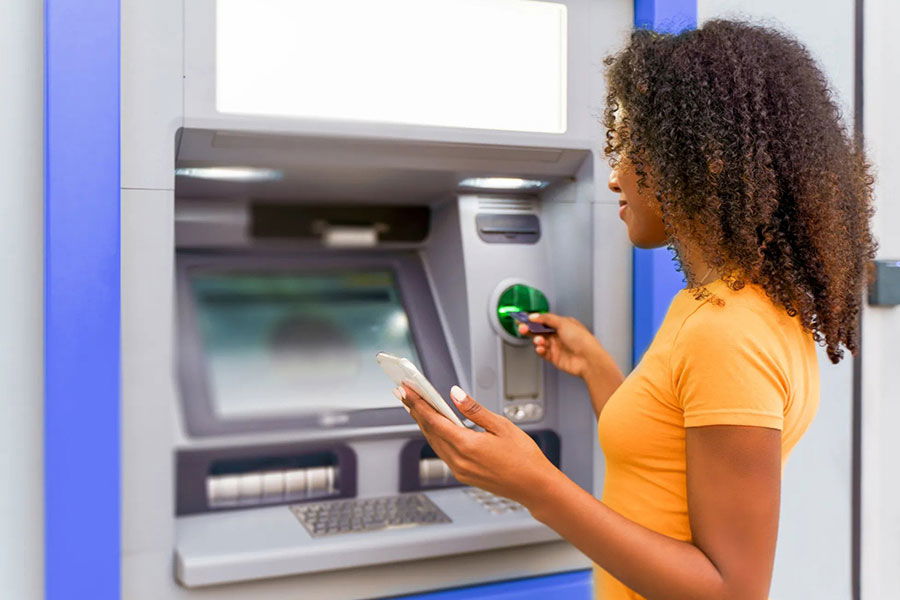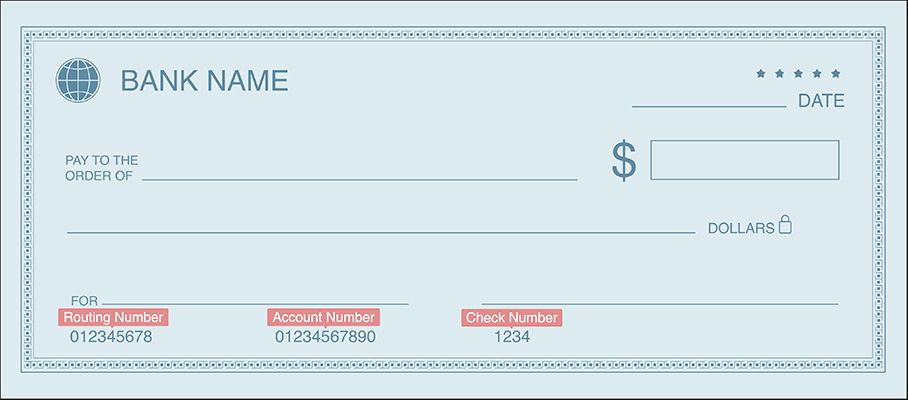ATMs are everywhere—from gas stations to grocery stores. But if you’ve never used one, or you’re unsure how to avoid the fees and stay safe, you’re not alone.

This quick guide breaks down exactly what an ATM does, how to use it, where to find one, and how to get the most out of it—without paying more than you should.
What is an ATM, and what can you do with it?
An ATM, or automated teller machine, is a self-service banking tool that lets you access your bank or credit union account without going into a branch. You can use it to get cash, check your balance, make deposits, transfer money, or sometimes pay bills.
ATMs are designed to handle the most common banking tasks. They’re quick, convenient, and usually available 24/7. You just need an ATM card or debit card and your personal identification number (PIN) to get started.
Some ATMs are full-featured and allow deposits or payments, while others only handle withdrawals. What you can do depends on who owns the ATM and what network it’s connected to.
Where You Can Find ATMs
You’ll find ATMs just about everywhere—at banks, grocery stores, gas stations, airports, and shopping centers. But not all machines are the same.
There are two main types of ATMs:
- Bank-owned ATMs – These belong to your financial institution or one in its network. They usually offer the most services and the lowest fees.
- Independent ATMs – These are placed by third-party companies in retail locations. They’re convenient, but they often charge higher fees and may not allow deposits.
To avoid extra charges, use ATMs that are part of your bank’s network. You can usually find these through your bank’s mobile app or website.
How to Use an ATM Step-by-Step
Using an ATM is simple once you know the steps. Here’s how it works:
- Insert your card – Insert your ATM or debit card into the machine’s card slot. Some machines may ask you to remove it quickly, while others keep it until your transaction is done.
- Enter your PIN – Type your personal identification number using the keypad. Always shield the keypad with your hand so no one else can see.
- Choose a transaction – The screen will show your options. Most ATMs offer:
- Withdraw cash
- Check your balance
- Transfer money
- Make a deposit (at supported machines)
- Follow the prompts – Enter the amount or details the machine asks for. If you’re depositing cash or checks, insert them into the appropriate slot.
- Finish your session – Once you’re done, the ATM will ask if you want a receipt. Then it will return your card and dispense any cash.
- Take everything with you – Don’t leave your card, receipt, or money behind.
Before using any machine, make sure it looks secure—no loose parts or suspicious attachments. If something seems off, find a different ATM.
ATM Fees to Watch Out For
ATM fees can add up fast if you’re not careful. Here’s what to watch for:
- Out-of-network fees – Your bank may charge you for using an ATM that doesn’t belong to its network.
- ATM owner fees – The machine’s owner can charge a fee on top of your bank’s fee. This is common with independent ATMs.
In total, you could pay $3 to $7 just to withdraw your own money.
How to avoid ATM fees:
- Stick to your bank’s ATMs
- Use a bank or credit union that reimburses ATM fees
- Take out larger amounts less often so you’re not charged repeatedly
Check your account terms or mobile app to see which ATMs you can use for free.
Staying Safe at the ATM
Using an ATM can be quick and easy, but you still need to stay alert. Safety means protecting both your physical security and your account information.
Tips to stay safe at the ATM:
- Pick well-lit locations: Use ATMs in public areas or attached to banks whenever possible.
- Be aware of your surroundings: If anything feels off—like someone standing too close—wait or find another machine.
- Shield the keypad: Cover your hand when entering your PIN, even if no one is around.
- Check the machine for tampering: Look for anything loose, bulky, or strange around the card slot or keypad. These could be signs of a skimming device.
- Take your receipt, card, and cash immediately: Don’t leave anything behind.
- If your card gets stuck, call your bank right away: Don’t accept help from strangers, and never give your PIN to anyone.
If your card is lost, stolen, or retained by a machine, contact your bank immediately to freeze the card and request a replacement.
Advanced ATM Features
In today’s ATM marketplace, many ATMs are equipped with advanced features. These include mobile ATM access, deposit automation, and biometric identification. Such services provide an extra layer of convenience, enabling you to complete basic transactions like checking your account balances or depositing checks without even inserting your card.
New Features: How ATMs Are Evolving
ATMs are getting smarter. Many now go beyond just dispensing cash.
Here are a few modern features you might find:
- Cardless access: Some ATMs let you use your smartphone instead of a physical card.
- Check imaging: Instead of using envelopes, newer ATMs scan your checks directly and show the image on-screen for confirmation.
- Biometric ID: A few banks are testing fingerprint or facial recognition to replace PINs.
- Multilingual options: Most machines now support several languages to make banking more accessible.
- Mobile app integration: You can start a transaction on your phone and complete it at the ATM for faster service.
Not all machines have these features yet, but they’re becoming more common—especially at ATMs owned by major banks.
Final Thoughts
ATMs make banking faster and more convenient, especially when your local branch is closed. You can grab cash, check your balance, or make deposits without waiting in line.
Just remember to watch out for fees, keep your PIN private, and use trusted machines. By taking a few simple precautions, you can avoid headaches and make the most of every transaction.
Frequently Asked Questions
What are ATM withdrawal limits?
ATM withdrawal limits vary by the bank and the type of account you have. These limits are put in place to protect the account holder from fraud. If you’re unsure of your limit, contact your bank or check your account details through online banking.
Can I deposit money at any ATM?
Not all ATMs accept deposits. Many ATMs in convenience stores, for example, only allow cash withdrawals. To deposit money, you’ll need to find an ATM owned by or affiliated with your bank or credit union.
Can I use my credit card at an ATM?
Yes, but it’s typically not recommended due to the high fees and interest rates associated with cash advances. Using a debit card or ATM card is generally a more cost-effective choice.
What is the difference between an ATM card and a debit card?
An ATM card allows you to access your bank account through ATMs for transactions such as withdrawing money, checking your account balance, and depositing checks. A debit card does all of that, plus it can be used for purchases at merchants that accept cards, similar to a credit card.
What happens if an ATM gives me the wrong amount of money?
If an ATM gives you the wrong amount of money, report the error to your bank as soon as possible. The bank will investigate the issue, which may include counting the cash in the ATM and checking the machine’s transaction records.
What should I do if my ATM card is lost or stolen?
If your ATM card is lost or stolen, contact your bank immediately to report the loss. They can cancel the card and issue a new one to prevent unauthorized transactions. It’s also a good idea to monitor your account for any suspicious activity.
Can I use an ATM in a foreign country?
Yes, you can use an ATM in a foreign country to withdraw cash in the local currency, check your account balance, and sometimes even deposit money. However, be aware that additional fees may apply, including foreign transaction fees and conversion fees.
What is a Bitcoin ATM, and how does it work?
A Bitcoin ATM is a machine that lets you buy—or sometimes sell—Bitcoin using cash or a debit card. Instead of linking to a bank account, it connects to the internet and exchanges Bitcoin for traditional currency.
Some machines require ID for larger transactions to meet legal requirements. While Bitcoin ATMs are convenient, they usually charge higher fees than online crypto exchanges.



